Grow Broccoli at Home? Absolutely! Imagine stepping into your backyard and harvesting fresh, vibrant broccoli, ready to be steamed, roasted, or tossed into a delicious salad. It’s not just a dream; it’s an achievable reality with a few simple tricks and a little DIY spirit. For centuries, cultivating our own food has been a cornerstone of self-sufficiency and a connection to the earth. From ancient Roman gardens to the victory gardens of wartime, growing your own produce has always held a special significance.
But let’s be honest, the idea of growing broccoli can seem daunting. Store-bought broccoli is readily available, so why bother? Well, the truth is, homegrown broccoli tastes infinitely better! Plus, you control exactly what goes into it, avoiding harmful pesticides and ensuring peak freshness. This DIY guide is designed to demystify the process and equip you with the knowledge and skills to successfully grow broccoli at home, even if you’re a complete beginner. I’m going to share some easy-to-follow hacks that will transform your garden into a broccoli-producing powerhouse. Get ready to enjoy the satisfaction of nurturing your own food from seed to table!
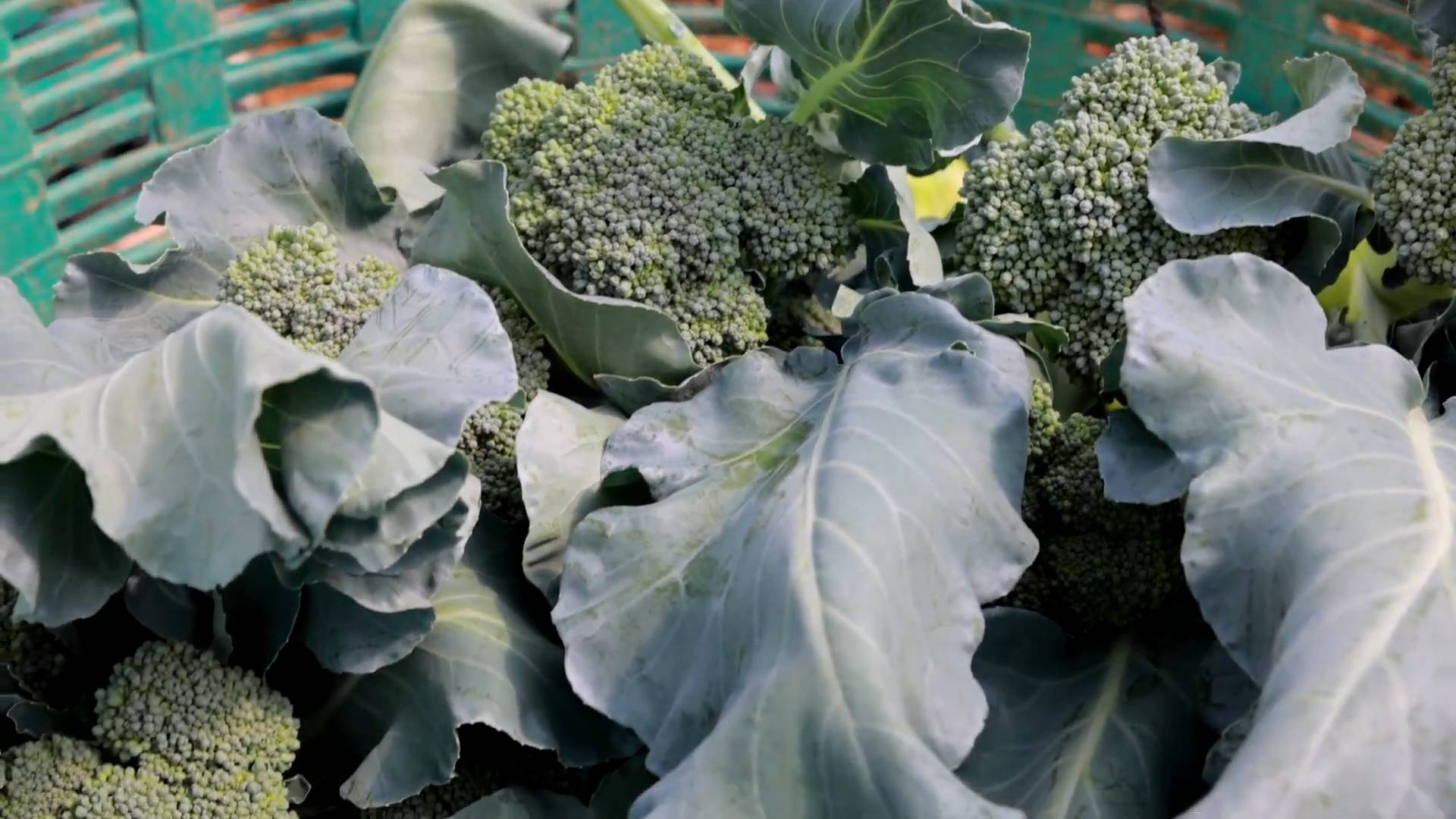
Growing Broccoli at Home: A Beginner’s Guide
Hey there, fellow gardening enthusiasts! Ever dreamt of harvesting your own crisp, green broccoli heads right from your backyard? Well, dream no more! Growing broccoli at home is totally achievable, even for beginners. I’m going to walk you through everything you need to know, from seed to harvest. Trust me, the taste of homegrown broccoli is unbeatable!
Choosing Your Broccoli Variety
First things first, let’s talk broccoli varieties. There are tons to choose from, each with its own unique characteristics. Here are a few popular options:
* **’Waltham 29′:** A classic, reliable variety that produces medium-sized heads. It’s a great all-around choice.
* **’Packman’:** This one’s known for its early maturity, meaning you’ll be harvesting sooner! It’s also heat-tolerant, which is a bonus if you live in a warmer climate.
* **’DiCicco’:** This heirloom variety produces a large central head followed by numerous side shoots, giving you a longer harvest period.
* **’Romanesco’:** If you’re feeling adventurous, try Romanesco! It’s a stunning fractal broccoli with a unique, nutty flavor.
Consider your climate and desired harvest time when making your selection. I personally love ‘Waltham 29’ for its consistent performance.
Starting Your Broccoli Seeds
You have two options here: starting seeds indoors or direct sowing. I usually prefer starting indoors, as it gives the seedlings a head start and protects them from pests.
Starting Seeds Indoors
1. **Gather Your Supplies:** You’ll need seed starting trays or small pots, seed starting mix (not regular potting soil!), broccoli seeds, a spray bottle, and a grow light (optional, but highly recommended).
2. **Fill the Trays:** Moisten the seed starting mix and fill your trays or pots, leaving about half an inch of space at the top.
3. **Sow the Seeds:** Plant 2-3 seeds per cell or pot, about ¼ inch deep. Gently cover with more seed starting mix.
4. **Water Carefully:** Use a spray bottle to gently moisten the soil. You don’t want to wash the seeds away!
5. **Provide Light and Warmth:** Place the trays under a grow light or in a sunny window. Broccoli seeds germinate best at temperatures between 65-75°F (18-24°C).
6. **Keep the Soil Moist:** Water regularly to keep the soil consistently moist, but not soggy.
7. **Thin the Seedlings:** Once the seedlings have their first true leaves (the second set of leaves), thin them to one plant per cell or pot. Choose the strongest, healthiest-looking seedling.
8. **Harden Off the Seedlings:** About a week before transplanting, gradually acclimate the seedlings to outdoor conditions. Start by placing them outside for an hour or two each day, increasing the time each day. This helps them adjust to the sun and wind.
Direct Sowing
If you live in a mild climate with a long growing season, you can direct sow broccoli seeds directly into the garden.
1. **Prepare the Soil:** Choose a sunny spot with well-drained soil. Amend the soil with compost or other organic matter to improve fertility.
2. **Sow the Seeds:** Plant the seeds about ½ inch deep and 18-24 inches apart.
3. **Water Regularly:** Keep the soil consistently moist until the seeds germinate.
4. **Thin the Seedlings:** Once the seedlings emerge, thin them to one plant every 18-24 inches.
Transplanting Your Broccoli Seedlings
Whether you started your seeds indoors or purchased seedlings from a nursery, transplanting is a crucial step.
1. **Choose the Right Time:** Transplant your broccoli seedlings when they are 4-6 weeks old and have 4-6 true leaves. The best time to transplant is in the early morning or late afternoon, when the sun is less intense.
2. **Prepare the Planting Area:** Choose a sunny location that receives at least 6 hours of sunlight per day. Broccoli needs plenty of sun to thrive. Amend the soil with compost or other organic matter to improve drainage and fertility. Broccoli prefers slightly acidic soil with a pH between 6.0 and 7.0.
3. **Dig the Holes:** Dig holes that are slightly larger than the root balls of the seedlings, spacing them 18-24 inches apart.
4. **Gently Remove the Seedlings:** Carefully remove the seedlings from their trays or pots, being careful not to damage the roots.
5. **Plant the Seedlings:** Place the seedlings in the holes, making sure the top of the root ball is level with the surrounding soil.
6. **Fill the Holes:** Fill the holes with soil and gently firm the soil around the base of the plants.
7. **Water Thoroughly:** Water the seedlings thoroughly after transplanting.
8. **Mulch:** Apply a layer of mulch around the plants to help retain moisture, suppress weeds, and regulate soil temperature. I like to use straw or shredded leaves.
Caring for Your Broccoli Plants
Once your broccoli plants are in the ground, it’s time to provide them with the care they need to thrive.
* **Watering:** Broccoli needs consistent moisture, especially during head formation. Water deeply and regularly, especially during dry spells. Aim for about 1-1.5 inches of water per week. Avoid overhead watering, as this can promote fungal diseases.
* **Fertilizing:** Broccoli is a heavy feeder, so it needs regular fertilization. Apply a balanced fertilizer (e.g., 10-10-10) every 2-3 weeks, following the package instructions. You can also side-dress with compost or aged manure.
* **Weeding:** Keep the area around your broccoli plants free of weeds. Weeds compete with broccoli for nutrients and water.
* **Pest Control:** Broccoli is susceptible to several pests, including cabbage worms, aphids, and flea beetles. Inspect your plants regularly for signs of infestation.
* **Cabbage Worms:** These green caterpillars can quickly devour broccoli leaves. Handpick them off the plants or use Bacillus thuringiensis (Bt), a natural insecticide.
* **Aphids:** These tiny insects suck sap from plants, causing them to weaken. Spray them off with a strong stream of water or use insecticidal soap.
* **Flea Beetles:** These small, jumping beetles can create tiny holes in broccoli leaves. Cover your plants with row covers to prevent flea beetles from reaching them.
* **Disease Prevention:** Broccoli is also susceptible to several diseases, including clubroot and black rot.
* **Clubroot:** This soilborne disease causes swollen, distorted roots. Prevent clubroot by ensuring good soil drainage and avoiding planting broccoli in the same spot year after year.
* **Black Rot:** This bacterial disease causes yellowing and browning of leaves. Prevent black rot by using disease-free seeds and avoiding overhead watering.
Harvesting Your Broccoli
The moment you’ve been waiting for! Harvesting your homegrown broccoli is incredibly rewarding.
1. **Know When to Harvest:** Broccoli is ready to harvest when the head is firm, tight, and a deep green color. The individual florets should be tightly closed. If the florets start to open and turn yellow, it’s time to harvest immediately.
2. **Use a Sharp Knife:** Use a sharp knife to cut the main head from the plant, leaving about 6 inches of stem.
3. **Encourage Side Shoots:** After harvesting the main head, the plant will often produce side shoots. These smaller heads can be harvested later in the season.
4. **Store Properly:** Store harvested broccoli in the refrigerator for up to a week. To keep it fresh, wrap it loosely in a damp paper towel and place it in a plastic bag.
Troubleshooting
Even with the best care, you might encounter some challenges when growing broccoli. Here are a few common problems and how to address them:
* **Small Heads:** Small heads can be caused by insufficient sunlight, poor soil fertility, or inadequate watering. Make sure your broccoli plants are getting at least 6 hours of sunlight per day, fertilize regularly, and water deeply.
* **Yellowing Leaves:** Yellowing leaves can be a sign of nutrient deficiency, disease, or pest infestation. Check the soil pH, fertilize as needed, and inspect your plants for pests and diseases.
* **Bolting:** Bolting (premature flowering) can be caused by heat stress or inconsistent watering. Choose heat-tolerant varieties, provide shade during hot weather, and water regularly.
Enjoying Your Harvest
Now for the best part: enjoying your homegrown broccoli! There are endless ways to prepare it. You can steam it, roast it, stir-fry it, or even eat it raw in salads. I personally love roasting broccoli with a little olive oil, garlic, and parmesan cheese.
Growing broccoli at home is a fun and rewarding experience. With a little planning and care, you can enjoy fresh, delicious broccoli all season long. Happy gardening!
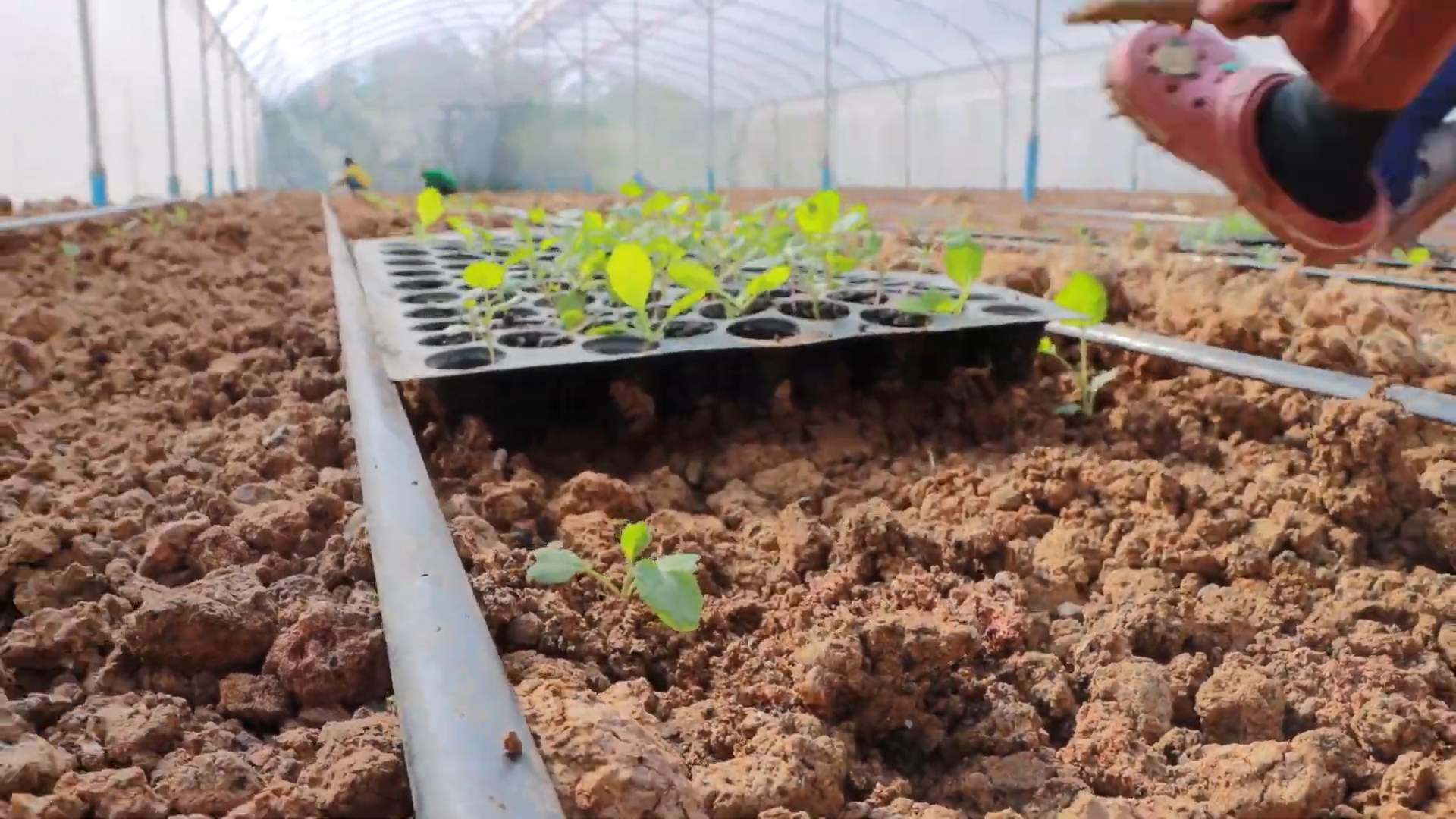
Conclusion
So, there you have it! Growing broccoli at home is not only achievable, but it’s also incredibly rewarding. From the satisfaction of nurturing a tiny seed into a vibrant, edible plant to the unparalleled freshness of homegrown produce, the benefits are numerous. We’ve walked you through the entire process, from selecting the right variety and preparing your soil to warding off pests and harvesting your bountiful crop.
Why is this DIY trick a must-try? Because it puts you in control. You know exactly what goes into your broccoli – no mystery pesticides or long-distance transportation. You get to enjoy the peak flavor and nutritional value, often surpassing anything you can find in a store. Plus, it’s a fantastic way to connect with nature, learn new skills, and even save money in the long run.
But the journey doesn’t end here! Feel free to experiment with different varieties of broccoli. Try growing Romanesco for its stunning fractal patterns or broccolini for its tender stalks and milder flavor. Consider companion planting with herbs like rosemary or thyme to deter pests naturally. You can even explore succession planting to enjoy a continuous harvest throughout the growing season. If you have limited space, container gardening is an excellent option. Just ensure your container is large enough to accommodate the broccoli’s root system.
Don’t be afraid to get your hands dirty and embrace the learning process. Gardening is all about trial and error, and even experienced gardeners face challenges. The key is to be patient, observant, and willing to adapt.
We are confident that with a little effort and the guidance provided in this article, you’ll be enjoying delicious, homegrown broccoli in no time. So, grab your seeds, prepare your soil, and embark on this exciting gardening adventure.
We wholeheartedly encourage you to try growing broccoli at home. It’s a fulfilling experience that will nourish your body and soul. And once you’ve harvested your first crop, we’d love to hear about your experience! Share your tips, successes, and even your challenges in the comments below. Let’s build a community of home gardeners and inspire others to discover the joys of growing their own food. Happy gardening!
Frequently Asked Questions (FAQ)
What is the best time of year to plant broccoli?
The best time to plant broccoli depends on your climate. Broccoli is a cool-season crop, so it thrives in temperatures between 60°F and 70°F (15°C and 21°C). In regions with mild winters, you can plant broccoli in the fall for a winter or early spring harvest. In colder climates, start seeds indoors 6-8 weeks before the last expected frost and transplant them outdoors in the spring. You can also plant a second crop in late summer for a fall harvest. Pay attention to your local weather patterns and frost dates to determine the optimal planting time for your area.
How much sunlight does broccoli need?
Broccoli requires at least 6 hours of direct sunlight per day to thrive. Choose a planting location that receives ample sunlight throughout the day. If you live in a particularly hot climate, some afternoon shade can be beneficial to prevent the plants from overheating. Insufficient sunlight can result in leggy plants with small heads.
What type of soil is best for growing broccoli?
Broccoli prefers well-drained, fertile soil that is rich in organic matter. The ideal soil pH is between 6.0 and 7.0. Before planting, amend your soil with compost, aged manure, or other organic materials to improve its fertility and drainage. If your soil is heavy clay, consider adding sand or perlite to improve drainage. A soil test can help you determine the pH and nutrient levels of your soil and guide you in making necessary amendments.
How often should I water broccoli plants?
Broccoli plants need consistent moisture to thrive. Water deeply and regularly, especially during dry periods. Aim to keep the soil consistently moist but not waterlogged. A good rule of thumb is to water when the top inch of soil feels dry to the touch. Mulching around the plants can help retain moisture and suppress weeds. Avoid overhead watering, as this can increase the risk of fungal diseases.
What are some common pests and diseases that affect broccoli?
Broccoli is susceptible to several pests and diseases, including cabbage worms, aphids, flea beetles, clubroot, and downy mildew. Regularly inspect your plants for signs of pests or diseases. Handpick cabbage worms and other pests whenever possible. Use insecticidal soap or neem oil to control aphids and flea beetles. To prevent clubroot, ensure your soil is well-drained and has a pH above 7.0. Practice crop rotation to reduce the buildup of soilborne pathogens. Downy mildew can be prevented by providing good air circulation and avoiding overhead watering.
How do I know when my broccoli is ready to harvest?
Broccoli is ready to harvest when the head is firm, compact, and the individual florets are tightly closed. The ideal head size will vary depending on the variety, but generally, a head that is 4-7 inches in diameter is ready for harvest. Use a sharp knife to cut the head from the plant, leaving a few inches of stem. After harvesting the main head, the plant may produce smaller side shoots that can also be harvested.
Can I grow broccoli in containers?
Yes, you can grow broccoli in containers, but you’ll need to choose a large container that is at least 12 inches in diameter and 12 inches deep. Use a high-quality potting mix that is well-draining and rich in organic matter. Container-grown broccoli may require more frequent watering and fertilization than broccoli grown in the ground. Choose a sunny location for your container and monitor the plants closely for signs of pests or diseases.
How do I fertilize broccoli plants?
Broccoli is a heavy feeder and benefits from regular fertilization. Apply a balanced fertilizer at planting time and then side-dress with a nitrogen-rich fertilizer every 3-4 weeks during the growing season. Follow the instructions on the fertilizer label for application rates. You can also use organic fertilizers such as compost tea or fish emulsion. Avoid over-fertilizing, as this can lead to excessive foliage growth and delayed head formation.
What are some good companion plants for broccoli?
Companion planting can help deter pests, attract beneficial insects, and improve the overall health of your broccoli plants. Some good companion plants for broccoli include:
* **Herbs:** Rosemary, thyme, sage, dill, and chamomile
* **Flowers:** Marigolds, nasturtiums, and calendula
* **Vegetables:** Onions, garlic, and lettuce
Avoid planting broccoli near strawberries, tomatoes, or peppers, as these plants can compete for nutrients or attract similar pests.
Can I eat the broccoli leaves?
Yes, broccoli leaves are edible and nutritious! They have a slightly bitter taste similar to kale or collard greens. You can cook them in the same way you would cook other leafy greens – sautéed, steamed, or added to soups and stews. Choose young, tender leaves for the best flavor and texture.


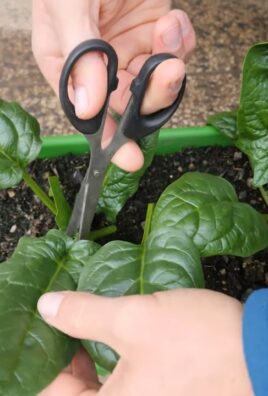
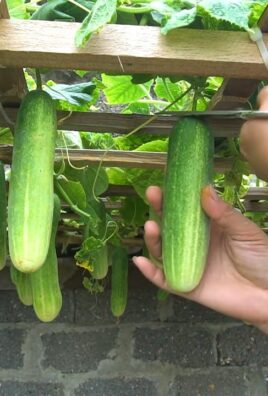
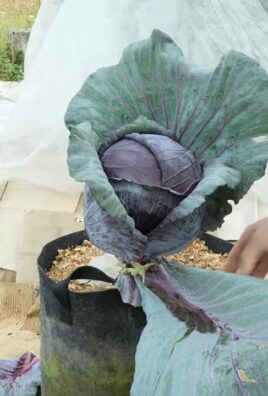
Leave a Comment